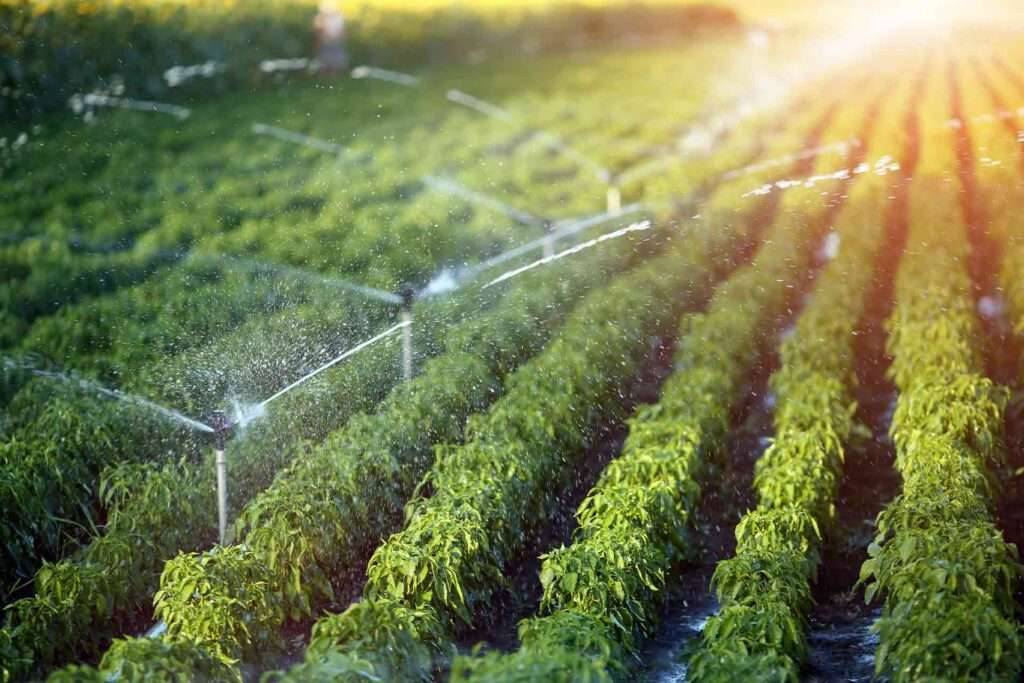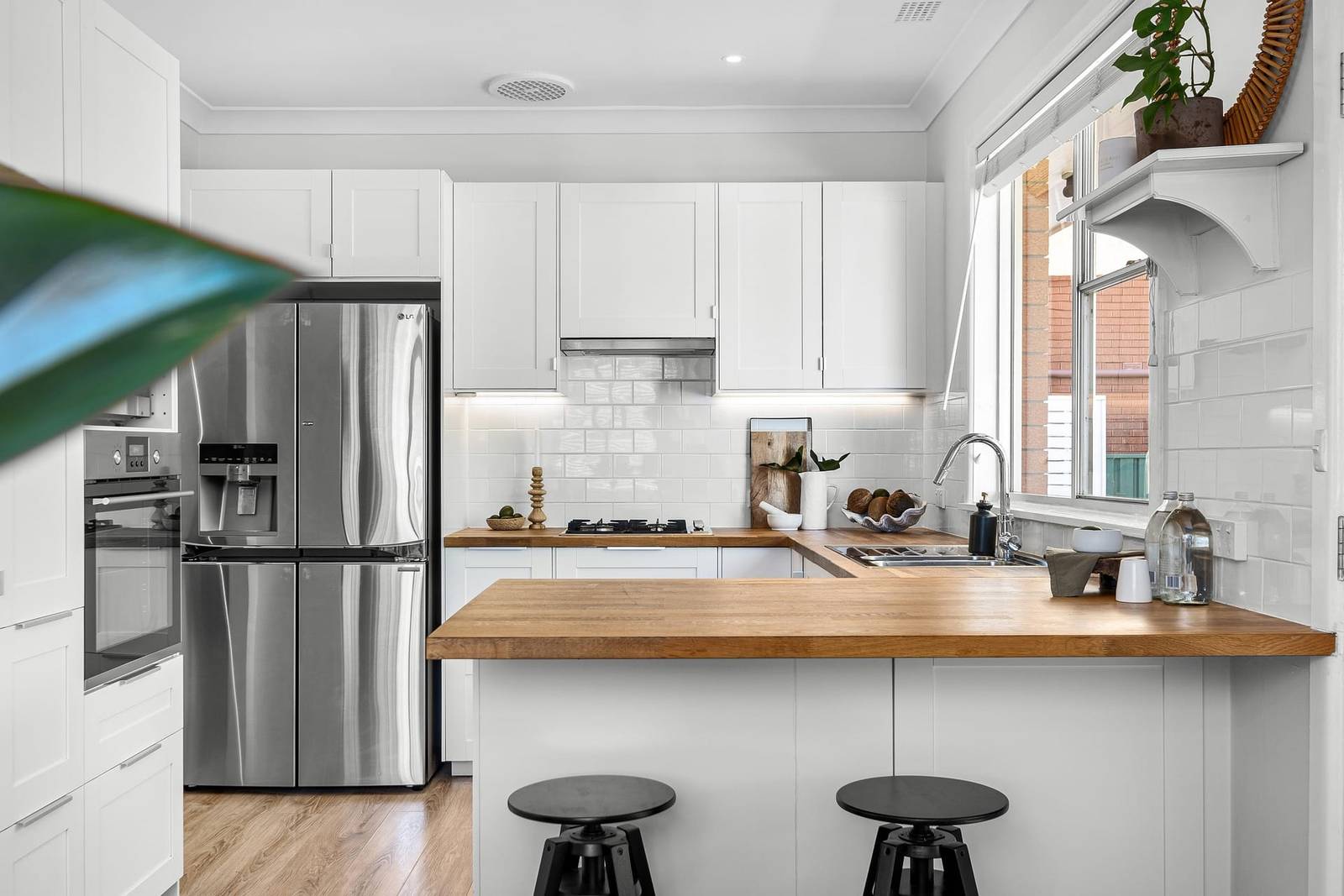For maintaining lush and vibrant garden we require green thumbs along with well-thought-irrigation system. Perfect irrigation system make your villa landscaping different in many ways.
The perfect irrigation system not only conserves water but also ensures that your plants receive the right amount of hydration to flourish. In this comprehensive guide, we’ll delve into the intricacies of designing and implementing an irrigation system tailored to the specific needs of your garden.
Understanding Your Garden’s Needs
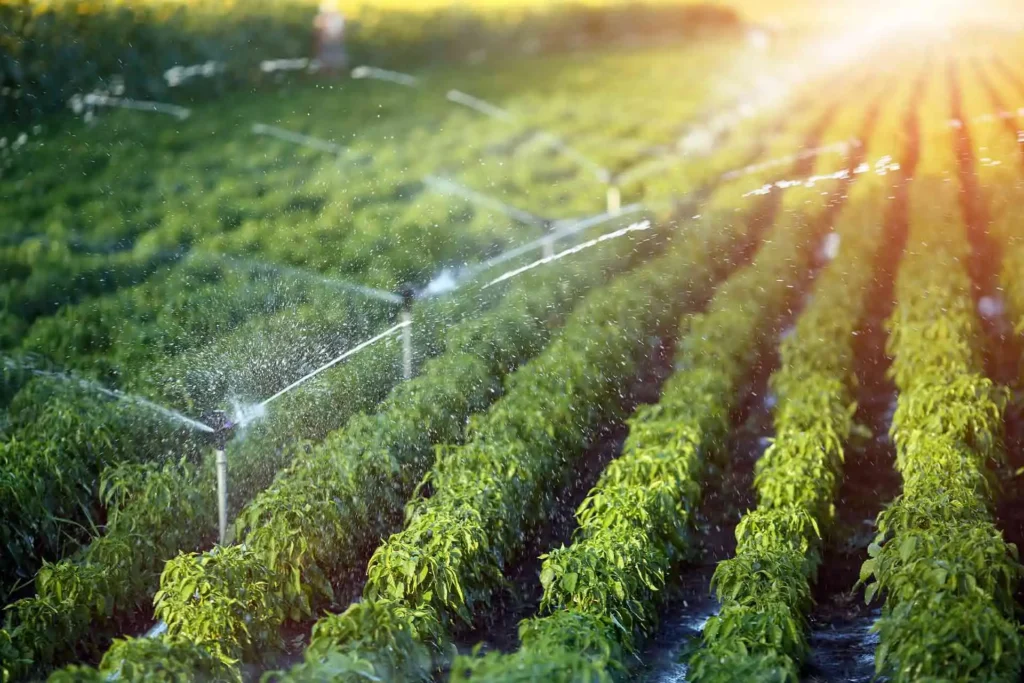
Before diving into the technical aspects of irrigation systems, it’s essential to understand the unique requirements of your garden. Factors such as soil type, plant species, sun exposure, and climate all play a crucial role in determining the ideal irrigation strategy.
Assessing Soil Type
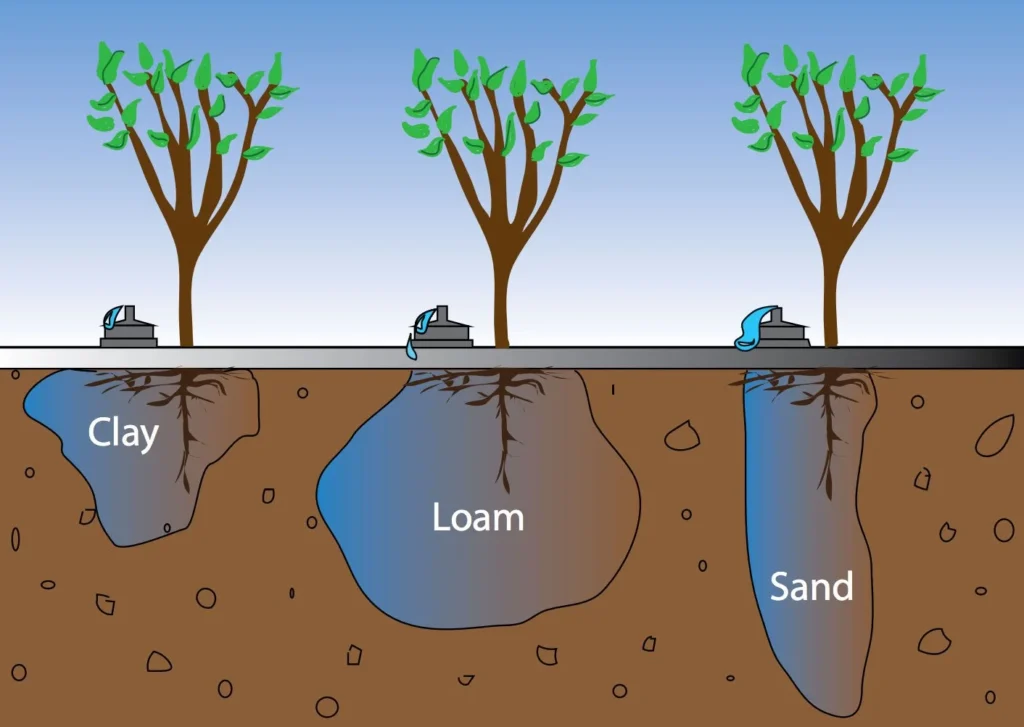
Different soil types have varying water retention capabilities. Sandy soils drain quickly, while clay soils retain water for longer periods. Conduct a soil test to determine your garden’s soil type and its drainage characteristics. This information will help you choose the appropriate irrigation method and frequency.
Considering Plant Species:
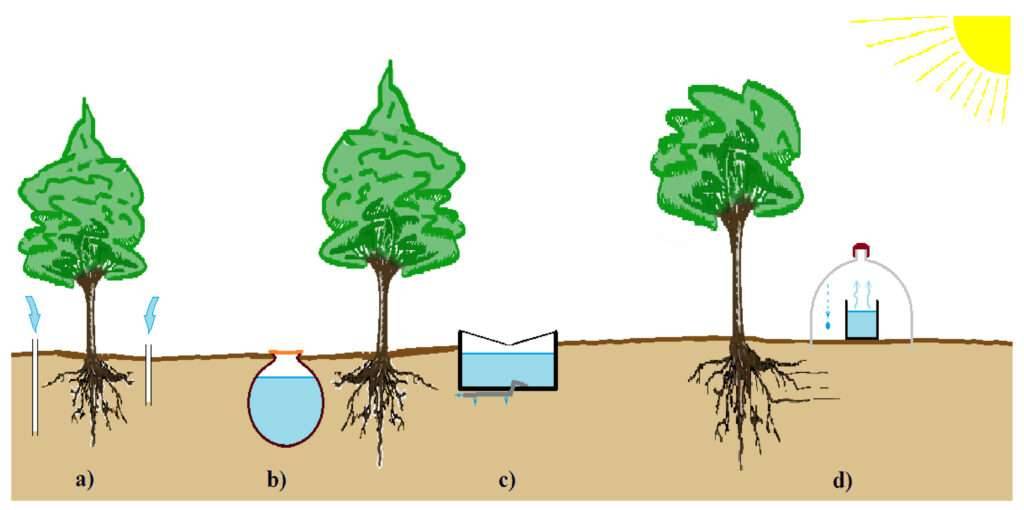
Plants have different water requirements based on their species and stage of growth. If we group plants with similar water needs together, it allows us for more efficient irrigation. Additionally, consider the root depth of each plant species to ensure water reaches the root zone effectively.
Evaluating Sun Exposure
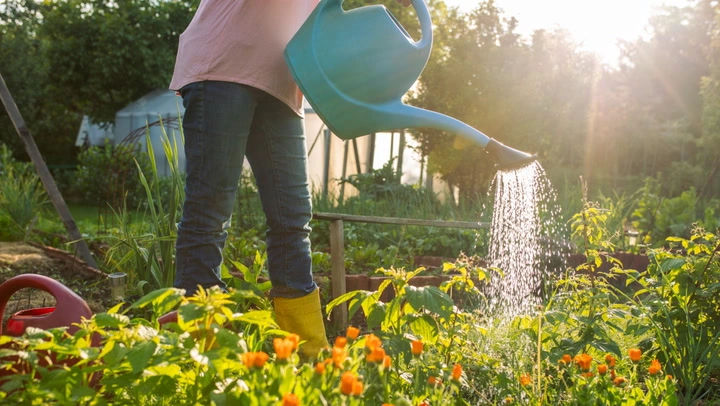
Plants in sun-drenched areas may require more frequent watering to compensate for increased evaporation. Conversely, plants in shaded areas may retain moisture for longer periods. Take note of the sun exposure in different parts of your garden to adjust your irrigation schedule accordingly.
Designing Your Irrigation System
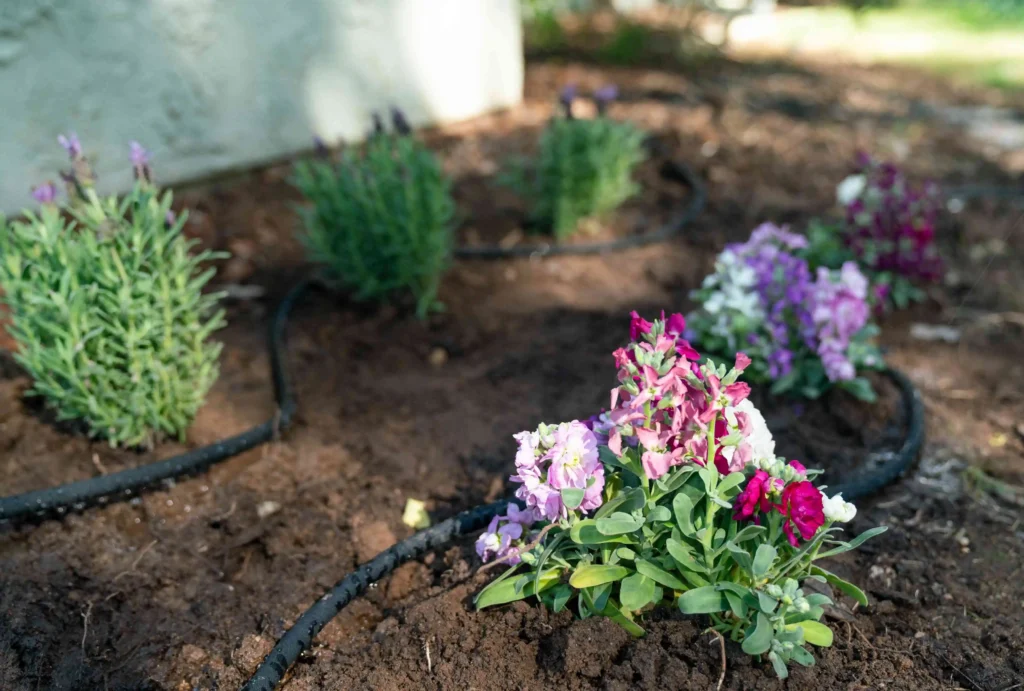
With a clear understanding of your garden’s needs, it’s time to design an irrigation system that maximizes water efficiency and plant health.
Drip Irrigation
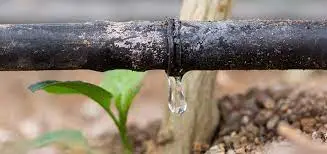
Drip irrigation delivers water directly to the root zone of plants, minimizing water loss through evaporation and runoff. This method is highly efficient and ideal for gardens with diverse plantings. Install drip emitters or soaker hoses along garden beds, ensuring even coverage and adjusting flow rates based on plant requirements.
Sprinkler Systems
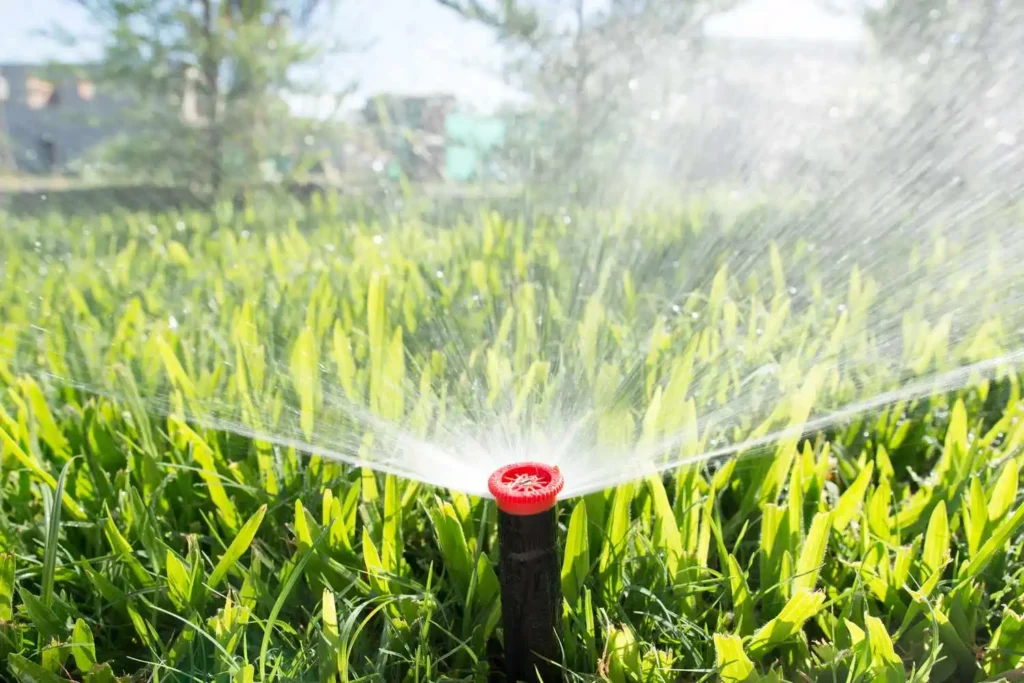
Sprinkler systems are suitable for larger garden areas and provide uniform coverage across the entire space. Choose sprinkler heads that deliver water in a gentle, rain-like pattern to prevent soil erosion and water wastage. Position sprinklers strategically to avoid watering non-plant areas such as pathways or driveways.
Smart Irrigation Controllers
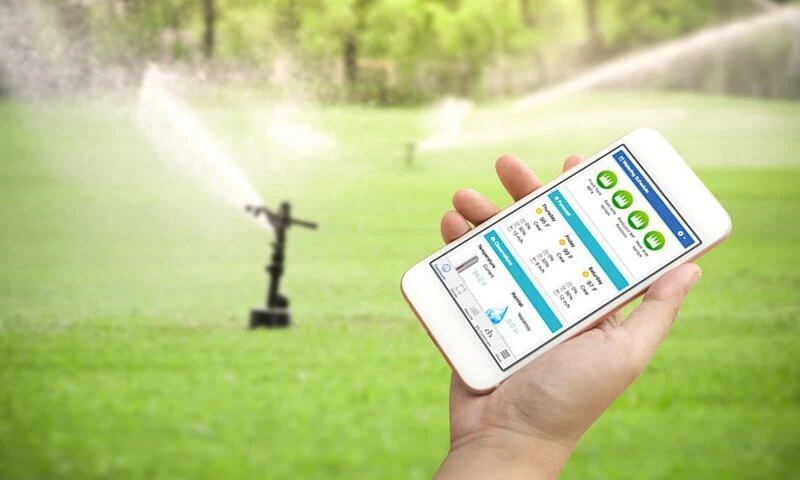
Investing in a smart irrigation controller can revolutionize the way you manage water usage in your garden. These devices use weather data and soil moisture sensors to adjust watering schedules automatically, ensuring optimal hydration without overwatering. Some models can be programmed remotely via smartphone apps, offering convenience and flexibility.
Rainwater Harvesting
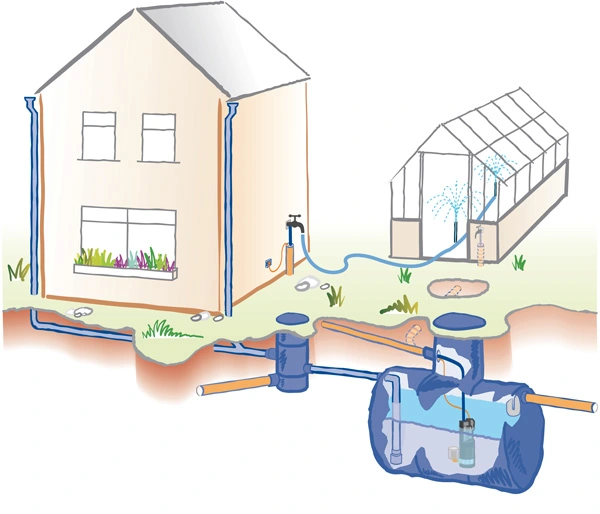
Harnessing rainwater for irrigation is both eco-friendly and cost-effective. Install rain barrels or cisterns to collect rainwater from rooftops, which can then be used to supplement your irrigation system during dry periods. Incorporating a filtration system ensures that collected rainwater is free from debris and contaminants.
Maintenance and Optimization
To keep your irrigation system operating at peak efficiency, regular maintenance and optimization are essential.
Inspect for Leaks
Periodically inspect your irrigation system for leaks, clogs, or damaged components. Addressing issues promptly prevents water wastage and ensures uniform water distribution.
Adjust Watering Schedule
Monitor weather conditions and adjust your irrigation schedule accordingly. During rainy periods, reduce or suspend watering to prevent overhydration. In times of drought, increase watering frequency to meet plant needs.
Mulching
Applying a layer of mulch around plants helps retain soil moisture, reducing the frequency of irrigation. Organic mulches such as compost or wood chips also enrich the soil as they decompose, promoting overall garden health.
Regularly Calibrate Sensors
If using smart irrigation controllers or soil moisture sensors, regularly calibrate these devices to ensure accurate readings. Calibrating sensors prevents under or overwatering, optimizing water usage and plant growth.
Seasonal Adjustments
Different seasons bring varying weather patterns and plant growth cycles, necessitating adjustments to your irrigation system.
As plants emerge from dormancy and growth accelerates, increase watering frequency to support new growth. Monitor soil moisture levels closely, especially during dry spells.
With higher temperatures and increased evaporation rates, adjust irrigation schedules to provide adequate hydration. Try to water plants early or late morning to prevent water loss .
As temperatures cool and plant growth slows, gradually reduce watering frequency to prevent overhydration. Take advantage of autumn rains to supplement irrigation needs.
In regions with mild winters, continue monitoring soil moisture levels and provide supplemental watering as needed. Protect irrigation components from freezing temperatures to prevent damage.
Soil Amendments
Regularly amending the soil with organic matter improves its structure, water retention capacity, and nutrient content. Incorporate compost, aged manure, or other organic amendments into the soil to enhance its ability to hold moisture and support plant growth. Healthy soil promotes root development and facilitates efficient water uptake by plants.
Watering Techniques
Optimize watering techniques to minimize water waste and ensure thorough hydration of plants.
Deep Watering
Encourage deep root growth by watering plants deeply and infrequently. This encourages roots to penetrate deeper into the soil, making them more resilient to drought conditions.
Avoid Overhead Watering
Minimize water wastage and prevent fungal diseases by avoiding overhead watering, especially late in the day. Instead, opt for drip irrigation or soaker hoses to deliver water directly to the root zone.
Watering by Hand
For small gardens or delicate plants, hand watering allows for precise control over water distribution. Use a watering can or hose with a nozzle attachment to deliver water gently and avoid soil compaction.
Monitoring and Adjusting
Regularly monitor your garden’s soil moisture levels, plant health, and overall water usage to make informed adjustments to your irrigation system.
Soil Moisture Sensors
Install soil moisture sensors throughout your garden to monitor moisture levels and trigger irrigation only when necessary. This prevents overwatering and ensures plants receive the right amount of hydration.
Visual Inspection
Keep an eye on plant foliage for signs of over or underwatering, such as wilting or yellowing leaves. Adjust irrigation schedules accordingly to address any issues promptly.
Water Usage Tracking
Track water usage over time to identify patterns and optimize irrigation schedules. Consider installing a water meter to monitor usage and detect leaks or inefficiencies in your irrigation system.
Incorporating Water-Saving Techniques
Implementing water-saving techniques not only conserves precious water resources but also reduces water bills and environmental impact.
Rainwater Harvesting
Capture rainwater from roofs or other surfaces and store it for later use in your irrigation system. Rain barrels, cisterns, or underground storage tanks can collect and store rainwater, providing a sustainable source of irrigation water.
Graywater Recycling
Reuse household graywater (wastewater from sinks, showers, and washing machines) for irrigation purposes. Install a graywater recycling system to divert wastewater to your garden, reducing the need for freshwater and minimizing water wastage.
Mulching
Apply a layer of organic mulch around plants to conserve soil moisture, suppress weed growth, and regulate soil temperature. Mulch acts as a natural insulator, reducing water evaporation from the soil surface and promoting healthy root development.
Soil Moisture Retention
Improve soil structure and water retention capacity by incorporating organic matter such as compost or aged manure into the soil. Amended soil retains moisture more effectively, reducing the frequency of irrigation and promoting plant resilience during dry periods.
Sustainable Irrigation Practices
Adopting sustainable irrigation practices minimizes environmental impact while supporting healthy plant growth. Choose drought-tolerant or native plant species that require minimal irrigation once established. Native plants are well-adapted to local climate conditions and soil types, reducing the need for supplemental watering.
Group plants with similar water requirements together to optimize irrigation efficiency. This allows you to tailor watering schedules to meet the specific needs of each plant group, minimizing water wastage.
Water plants during the early morning or late evening when temperatures are cooler and evaporation rates are lower. Avoid watering during the hottest part of the day to reduce water loss through evaporation and ensure efficient water uptake by plants.
Keep irrigation system components clean and well-maintained to prevent leaks, clogs, or malfunctions. Inspect pipes, valves, and emitters regularly and repair any issues promptly to avoid water wastage.
Educating Yourself and Others:
Continuously educate yourself and others about water-efficient gardening practices and the importance of responsible water use. Attend gardening workshops, seminars, or online courses to learn about water-efficient gardening techniques, irrigation system design, and sustainable landscaping practices.
Share your knowledge and experience with friends, neighbors, and community members to promote water conservation and environmental stewardship. Encourage others to adopt water-saving practices in their gardens and landscapes. Establish demonstration gardens or participate in community garden projects to showcase water-efficient landscaping techniques and inspire others to incorporate these practices into their own gardens.
Crafting the perfect irrigation system for your garden involves careful planning, implementation, and ongoing maintenance. By incorporating water-saving techniques, sustainable irrigation practices, and continuous education, you can create a garden oasis that thrives while conserving water resources and minimizing environmental impact. Whether you’re a seasoned gardener or a novice enthusiast, embracing water-efficient gardening practices benefits not only your garden but also the planet. Let’s work together to create beautiful, sustainable gardens that nourish the soul and protect the environment for future generations.

